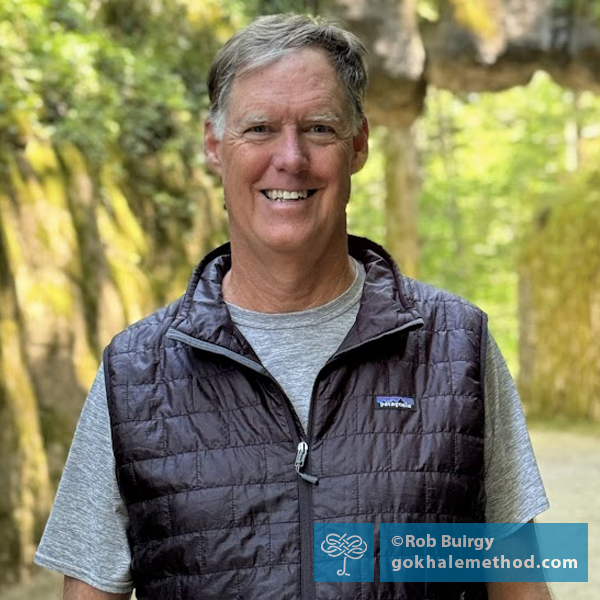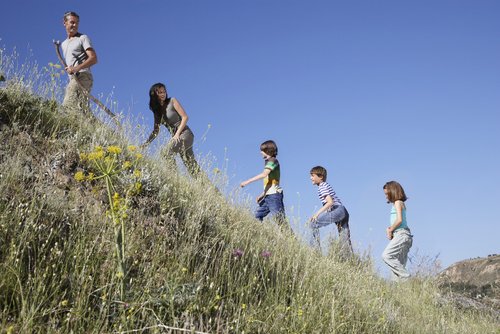From Back Fracture and Knee Surgery, to Rafting and Hiking
Ronald Katz’s Gokhale (Gō-clay) Method® Success Story
Respecting the Neck: The Eyes Have It
My passion for researching posture has taken me far and wide. I was in a village in Burkina Faso in western Africa when I first noticed how people there would track the conversation from speaker to speaker mainly by using their eyes, rather than by turning their heads. Along with their excellent body posture it contributed to a strikingly well-centered, dignified bearing.
This young man in Burkina Faso demonstrates the dignified bearing that comes with an appropriate amount of eye tracking.
Comparing what I saw in Burkina Faso with what I was used to seeing back home, I realized that in the US, and the wider industrialized world, we move our eyes a good deal less and our necks a good deal more
Glidewalking: Sitting’s Long-Lost Counterpart
Mother and son in a tribal Orissan village demonstrating excellent walking form. Notice that their heels remain on the floor well into their stride.
Do you have tight psoas muscles? Do you suspect the cause is too much time spent sitting in your daily life? There’s a complementary activity that helps counterbalance the time we spend sitting: walking — or, more specifically, glidewalking. Glidewalking helps balance our sitting in numerous ways — walking is dynamic versus sitting which is static. Yang balances Yin, viewed in the framework of traditional Chinese medicine. One underappreciated way in which walking can balance sitting pertains to the psoas muscle.
The psoas muscle originates on
"I Found I Could Defeat Sciatica:" Norm's Story
Photo courtesy Norman Crawford.
Norm, a hydrologic analyst and author now 82 years of age, originally hails from Alberta, Canada. When Norm was 16 years old, he accepted a summer job in Lake Louise (also known as Lake of the Little Fishes by the local Stoney Nakoda people), a location in the Canadian Rockies so known for its rugged beauty that it is frequently included on lists of “Wonders of the World.” This breathtaking landscape formed the backdrop for Norm’s lifelong love affair with the outdoors. Decades later, Norm still speaks of Lake Louise with understated reverence.
Lake Louise, Alberta, Canada, where Norm first fell in love with hiking. Photo courtesy Kevin Noble on Unsplash.
These



